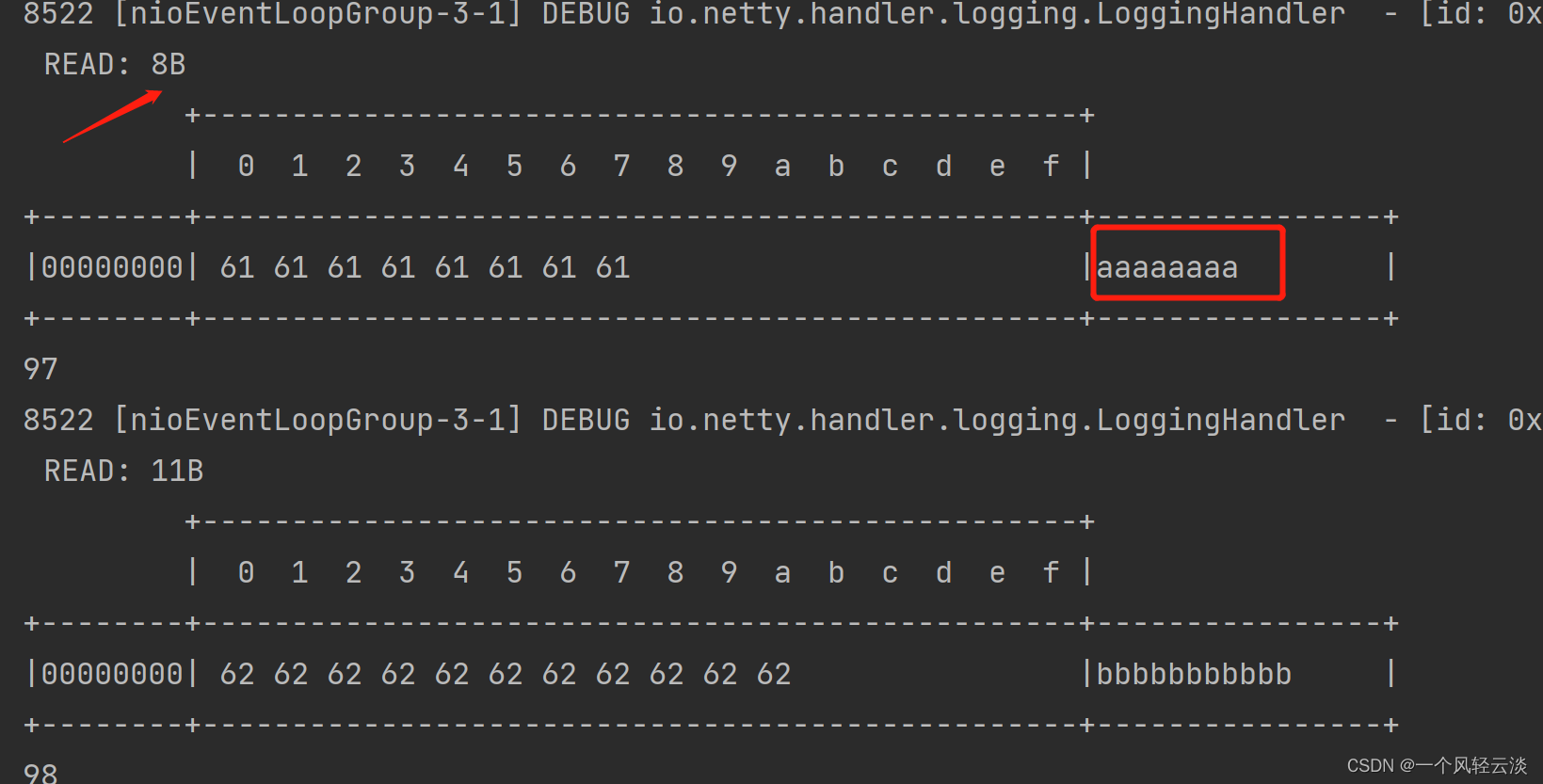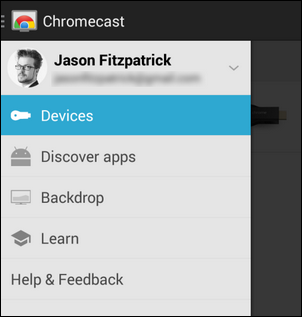【Linux】按键驱动程序
前言:
一、按键驱动程序的背景知识
1.1 查询方式
1.2 休眠-唤醒方式
1.3 poll方式
1.4 异步通知
1.5 总结
二、按键驱动程序的框架
三、按键驱动程序实战
3.4 Makefile文件
3.6 运行测试
3.6.1 首先编译内核(如果没编译过)
3.6.2 设置交叉编译工具链(Ubuntu)
3.6.3 编译(Ubuntu)
3.6.4 上机测试(开发板)
前言:
按键驱动程序--通过读取按键值,执行某些任务。实现过程中可以深刻的认识到驱动的基本技能:中断、休眠、唤醒、poll等机制。
APP读取按键有四种方式,查询方式、休眠-唤醒方式、poll方式以及异步通知方式。这些方式相对应的驱动程序如何编写?是本文探究的地方。(韦老师课程)
一、按键驱动程序的背景知识
APP读取按键有四种方式,查询方式、休眠-唤醒方式、poll方式以及异步通知方式。后面三种方法都涉及到中断服务程序。中断在按键驱动程序中是核心,其更是在单片机还是在Linux中也非常重要。
1.1 查询方式
相较于LED最简驱动程序,这里没有大的区别,驱动程序中构造、注册一个file_operations结构体,里面提供有对应的open、read函数。APP调用open时,相应调用驱动程序里的drv_open函数,配置GPIO引脚为输入引脚。APP调用read时,相应调用驱动程序里的drv_read函数,读取寄存器,把引脚状态返回给APP。

1.2 休眠-唤醒方式
休眠-唤醒的方式相较于查询方式,需要调用中断服务程序,drv_open里还需要注册按键中断服务程序,drv_read里则是分为两种情况,有按键数据时,直接返回,没有数据时,休眠。
当用户按下按键时,GPIO中断触发,相应驱动程序之前注册的中断服务程序调用执行,记录按键数据,并唤醒休眠中的APP。
APP唤醒后继续在内核态运行,执行驱动代码,把按键数据返回到用户空间。

1.3 poll方式
上面的休眠-唤醒方式,有一个缺陷,如果用户一直操作按键,那么APP就会永远休眠。我们可以定一个闹钟,到时唤醒---poll方式。
APP调用poll/select函数,意图是“查询”是否有数据,函数可以指定一个超时时间,即在这段时间内没有数据,就返回错误。这里会调用驱动程序里的drv_poll。
这里APP唤醒就有两种方式,用户按下按键以及超时。被唤醒的APP在内核态继续运行,把“状态”返回给APP(用户空间)。
APP得到poll/select函数的返回结果后,如果确认有数据,则再调用read函数,相应调用驱动程序中的drv_read函数,驱动程序中有数据,会直接返回数据。

1.4 异步通知
异步通知的实现原理是:内核给APP发信号。信号有很多中,这里常用的是SIGIO。
驱动程序中构造、注册一个file_operations结构体,里面提供有对应的open、read、fasync函数。
- APP调用open时,导致驱动中对应的open函数被调用,在里面配置GPIO为输入引脚,并注册GPIO的中断处理函数。
- APP给信号SIGIO注册自己的处理函数:my_signal_fun
- APP调用fcntl函数,将驱动程序的flag改为FASYNC,对应调用驱动程序的drv_fasync---记录进程PID
- 当用户按下按键时,GPIO中断被触发,执行中断服务程序(记录按键数据,给进程PID发送SIGIO信号)
- APP收到信号后会被打断,先执行信号处理函数。信号处理函数中可以调用read函数读取按键值
- 信号处理函数返回后,APP会继续执行原先被打断的代码。

1.5 总结
我们实现的驱动程序应该要实现上述的四种方式,不限制APP使用哪种方法。
驱动程序提供能力,不提供策略。APP想用哪种方法都可以,驱动程序都可以提供,驱动程序不限制你使用哪种方法。
二、按键驱动程序的框架
这里以分层的思想构建驱动框架。驱动程序的简单框架,参照文章:http://t.csdn.cn/NVv3I
目的写出一个容易扩展到各种芯片、各种板子的按键驱动程序,这里分为上下两层:
- ①button_drv.c分配/设置/注册file_operations结构体
- 向上提供button_open、button_read供APP调用
- 向下调用底层硬件提供的p_button_opr中的init、read函数操作硬件
- ②board_xxx.c分配/配置/注册button_operations结构体
- 定义单板的按键操作函数

三、按键驱动程序实战
这里主体实现的函数文件对应有button_drv.c、button_drv.h、button_test.c、Makefile以及board_100ask_imx6ull.c。
3.1 头文件(button_drv.h)
这里主要注册button_operations结构体,并声明注册函数。
/*定义宏--防止头文件被重复包含*/
#ifndef _BUTTON_DRV_H
#define _BUTTON_DRV_Hstruct button_operations {int count;void (*init) (int which);int (*read) (int which);
};void register_button_operations(struct button_operations *opr);
void unregister_button_operations(void);#endif3.2 驱动程序(button_drv.c)
这里主体实现分配/配置/注册file_operations结构体。具体驱动程序步骤见代码:
/* 说明:*1,本代码是跟学韦老师课程所编,增加了注释和理解*2,采用的是UTF-8编码格式*3,button_drv.c
*/#include <linux/module.h>
#include <linux/errno.h>
#include <linux/kernel.h>
#include <linux/major.h>
#include <linux/sched.h>
#include <linux/slab.h>
#include <linux/fcntl.h>
#include <linux/fs.h>
#include <linux/signal.h>
#include <linux/mutex.h>
#include <linux/mm.h>
#include <linux/timer.h>
#include <linux/wait.h>
#include <linux/skbuff.h>
#include <linux/proc_fs.h>
#include <linux/poll.h>
#include <linux/capi.h>
#include <linux/kernelcapi.h>
#include <linux/init.h>
#include <linux/device.h>
#include <linux/moduleparam.h>#include "button_drv.h"/*第一步:确定主设备号,这里由内核分配*/
static int major = 0;static struct button_operations *p_button_opr;
static struct class *button_class;/**函数: button_open*功能:①从inode获取次设备号minor②调用初始化函数*传入参数:*flie:要打开的文件*返回参数:如果成功返回0*
*/
static int button_open (struct inode *inode, struct file *file)
{int minor = iminor(inode);p_button_opr->init(minor);return 0;
}/**函数: button_read*功能: copy_to_user,将数据读到app中*传入参数:*flie:要读的文件*buf: 读的数据放入buf*size:读多大的数据*off:偏移值*返回参数:如果成功就返回1
*/static ssize_t button_read (struct file *file, char __user *buf, size_t size, loff_t *off)
{unsigned int minor = iminor(file_inode(file));char level;int err;level = p_button_opr->read(minor);err = copy_to_user(buf, &level, 1);return 1;
}/*第二步:定义自己的file_operations结构体*/
static struct file_operations button_fops = {.open = button_open,.read = button_read,
};/**注册函数: register_button_operations*功能: 调用结构体,创建设备节点
*/void register_button_operations(struct button_operations *opr)
{int i;p_button_opr = opr;for (i = 0; i < opr->count; i++){device_create(button_class, NULL, MKDEV(major, i), NULL, "100ask_button%d", i);}
}void unregister_button_operations(void)
{int i;for (i = 0; i < p_button_opr->count; i++){device_destroy(button_class, MKDEV(major, i));}
}EXPORT_SYMBOL(register_button_operations);
EXPORT_SYMBOL(unregister_button_operations);/*第三步:定义一个入口函数,调用register_chrdev*/
/**函数: button_init*差异点: 有多个次设备号*功能: ①注册主设备号 ②辅助完善:提供设备信息,自动创建设备节点:class_create
*/int button_init(void)
{major = register_chrdev(0, "100ask_button", &button_fops);button_class = class_create(THIS_MODULE, "100ask_button");if (IS_ERR(button_class))return -1;return 0;
}
/*第四步:定义一个出口函数,调用register_chrdev*/void button_exit(void)
{class_destroy(button_class);unregister_chrdev(major, "100ask_button");
}module_init(button_init);
module_exit(button_exit);
MODULE_LICENSE("GPL");3.3 驱动程序(button_100ask_imx6ull.c)
根据imx6ull pro开发板的gpio硬件数据手册编写。
#include <linux/module.h>#include <linux/fs.h>
#include <linux/io.h>
#include <linux/errno.h>
#include <linux/miscdevice.h>
#include <linux/kernel.h>
#include <linux/major.h>
#include <linux/mutex.h>
#include <linux/proc_fs.h>
#include <linux/seq_file.h>
#include <linux/stat.h>
#include <linux/init.h>
#include <linux/device.h>
#include <linux/tty.h>
#include <linux/kmod.h>
#include <linux/gfp.h>
#include <asm/io.h>#include "button_drv.h"/*查询数据手册*/
struct iomux {volatile unsigned int unnames[23];volatile unsigned int IOMUXC_SW_MUX_CTL_PAD_GPIO1_IO00; /* offset 0x5c */volatile unsigned int IOMUXC_SW_MUX_CTL_PAD_GPIO1_IO01;volatile unsigned int IOMUXC_SW_MUX_CTL_PAD_GPIO1_IO02;volatile unsigned int IOMUXC_SW_MUX_CTL_PAD_GPIO1_IO03;volatile unsigned int IOMUXC_SW_MUX_CTL_PAD_GPIO1_IO04;volatile unsigned int IOMUXC_SW_MUX_CTL_PAD_GPIO1_IO05;volatile unsigned int IOMUXC_SW_MUX_CTL_PAD_GPIO1_IO06;volatile unsigned int IOMUXC_SW_MUX_CTL_PAD_GPIO1_IO07;volatile unsigned int IOMUXC_SW_MUX_CTL_PAD_GPIO1_IO08;volatile unsigned int IOMUXC_SW_MUX_CTL_PAD_GPIO1_IO09;volatile unsigned int IOMUXC_SW_MUX_CTL_PAD_UART1_TX_DATA;volatile unsigned int IOMUXC_SW_MUX_CTL_PAD_UART1_RX_DATA;volatile unsigned int IOMUXC_SW_MUX_CTL_PAD_UART1_CTS_B;
};struct imx6ull_gpio {volatile unsigned int dr;volatile unsigned int gdir;volatile unsigned int psr;volatile unsigned int icr1;volatile unsigned int icr2;volatile unsigned int imr;volatile unsigned int isr;volatile unsigned int edge_sel;
};/* enable GPIO4 */
static volatile unsigned int *CCM_CCGR3; /* enable GPIO5 */
static volatile unsigned int *CCM_CCGR1; /* set GPIO5_IO03 as GPIO */
static volatile unsigned int *IOMUXC_SNVS_SW_MUX_CTL_PAD_SNVS_TAMPER1;/* set GPIO4_IO14 as GPIO */
static volatile unsigned int *IOMUXC_SW_MUX_CTL_PAD_NAND_CE1_B;static struct iomux *iomux;static struct imx6ull_gpio *gpio4;
static struct imx6ull_gpio *gpio5;/**函数: board_imx6ull_button_init*功能 使能GPIO模块、设置GPIO5-01和GPIO04-14(GPIO模式、方向)
*/static void board_imx6ull_button_init (int which) /* 初始化button, which-哪个button */
{if (!CCM_CCGR1){CCM_CCGR1 = ioremap(0x20C406C, 4);CCM_CCGR3 = ioremap(0x20C4074, 4);IOMUXC_SNVS_SW_MUX_CTL_PAD_SNVS_TAMPER1 = ioremap(0x229000C, 4);IOMUXC_SW_MUX_CTL_PAD_NAND_CE1_B = ioremap(0x20E01B0, 4);iomux = ioremap(0x20e0000, sizeof(struct iomux));gpio4 = ioremap(0x020A8000, sizeof(struct imx6ull_gpio));gpio5 = ioremap(0x20AC000, sizeof(struct imx6ull_gpio));}if (which == 0){/* 1. enable GPIO5 * CG15, b[31:30] = 0b11*/*CCM_CCGR1 |= (3<<30);/* 2. set GPIO5_IO01 as GPIO * MUX_MODE, b[3:0] = 0b101*/*IOMUXC_SNVS_SW_MUX_CTL_PAD_SNVS_TAMPER1 = 5;/* 3. set GPIO5_IO01 as input * GPIO5 GDIR, b[1] = 0b0*/gpio5->gdir &= ~(1<<1);}else if(which == 1){/* 1. enable GPIO4 * CG6, b[13:12] = 0b11*/*CCM_CCGR3 |= (3<<12);/* 2. set GPIO4_IO14 as GPIO * MUX_MODE, b[3:0] = 0b101*/IOMUXC_SW_MUX_CTL_PAD_NAND_CE1_B = 5;/* 3. set GPIO4_IO14 as input * GPIO4 GDIR, b[14] = 0b0*/gpio4->gdir &= ~(1<<14);}}/**函数: board_imx6ull_button_read*功能 读取寄存器
*/
static int board_imx6ull_button_read (int which) /* 读button, which-哪个 */
{//printk("%s %s line %d, button %d, 0x%x\n", __FILE__, __FUNCTION__, __LINE__, which, *GPIO1_DATAIN);if (which == 0)return (gpio5->psr & (1<<1)) ? 1 : 0;elsereturn (gpio4->psr & (1<<14)) ? 1 : 0;
}//两个按键
static struct button_operations my_buttons_ops = {.count = 2,.init = board_imx6ull_button_init,.read = board_imx6ull_button_read,
};int board_imx6ull_button_drv_init(void)
{register_button_operations(&my_buttons_ops);return 0;
}void board_imx6ull_button_drv_exit(void)
{unregister_button_operations();
}module_init(board_imx6ull_button_drv_init);
module_exit(board_imx6ull_button_drv_exit);MODULE_LICENSE("GPL");
3.4 Makefile文件
适用于imx6ull pro开发板内核。
# 1. 使用不同的开发板内核时, 一定要修改KERN_DIR
# 2. KERN_DIR中的内核要事先配置、编译, 为了能编译内核, 要先设置下列环境变量:
# 2.1 ARCH, 比如: export ARCH=arm
# 2.2 CROSS_COMPILE, 比如: export CROSS_COMPILE=arm-buildroot-linux-gnueabihf-
# 2.3 PATH, 比如: export PATH=$PATH:/home/book/100ask_imx6ull-sdk/ToolChain/arm-buildroot-linux-gnueabihf_sdk-buildroot/bin
# 注意: 不同的开发板不同的编译器上述3个环境变量不一定相同,
# 请参考各开发板的高级用户使用手册KERN_DIR = /home/book/100ask_imx6ull-sdk/Linux-4.9.88all:make -C $(KERN_DIR) M=`pwd` modules $(CROSS_COMPILE)gcc -o button_test button_test.c clean:make -C $(KERN_DIR) M=`pwd` modules cleanrm -rf modules.orderrm -f ledtest# 参考内核源码drivers/char/ipmi/Makefile
# 要想把a.c, b.c编译成ab.ko, 可以这样指定:
# ab-y := a.o b.o
# obj-m += ab.oobj-m += button_drv.o
obj-m += board_100ask_imx6ull.o
3.5 应用程序(button_test.c)
这里的实现,为简单的查询方式。
#include <sys/types.h>
#include <sys/stat.h>
#include <fcntl.h>
#include <unistd.h>
#include <stdio.h>
#include <string.h>/** ./button_test /dev/100ask_button0**/
int main(int argc, char **argv)
{int fd;char val;/* 1. 判断参数 */if (argc != 2) {printf("Usage: %s <dev>\n", argv[0]);return -1;}/* 2. 打开文件 */fd = open(argv[1], O_RDWR);if (fd == -1){printf("can not open file %s\n", argv[1]);return -1;}/* 3. 写文件 */read(fd, &val, 1);printf("get button : %d\n", val);close(fd);return 0;
}
3.6 运行测试
3.6.1 首先编译内核(如果没编译过)
参照这篇文章【Linux】imx6ull开发板第一个驱动实验(led)_希希雾里的博客-CSDN博客
3.6.2 设置交叉编译工具链(Ubuntu)
export ARCH=arm
export CROSS_COMPILE=arm-buildroot-linux-gnueabihf-
export PATH=$PATH:/home/book/100ask_imx6ull-sdk/ToolChain/arm-buildroot-linux-gnueabihf_sdk-buildroot/bin3.6.3 编译(Ubuntu)
make编译后,将.ko文件和 led_test_simple复制到nfs挂载的文件夹下。
make
cp *.ko button_test ~/nfs_rootfs/3.6.4 上机测试(开发板)
mount -t nfs -o nolock,vers=3 192.168.5.11:/home/book/nfs_rootfs /mnt
//复制到开发板上
cp /mnt/button_drv.ko ./
cp /mnt/board_100ask_imx6ull.ko ./
cp /mnt/button_test ./
//安装驱动模块
insmod button_drv.ko
insmod board_100ask_imx6ull.ko//查询是否有我们的设备节点
ls /dev/100*//读取
./button_test /dev/100ask_button0读取按键结果:








